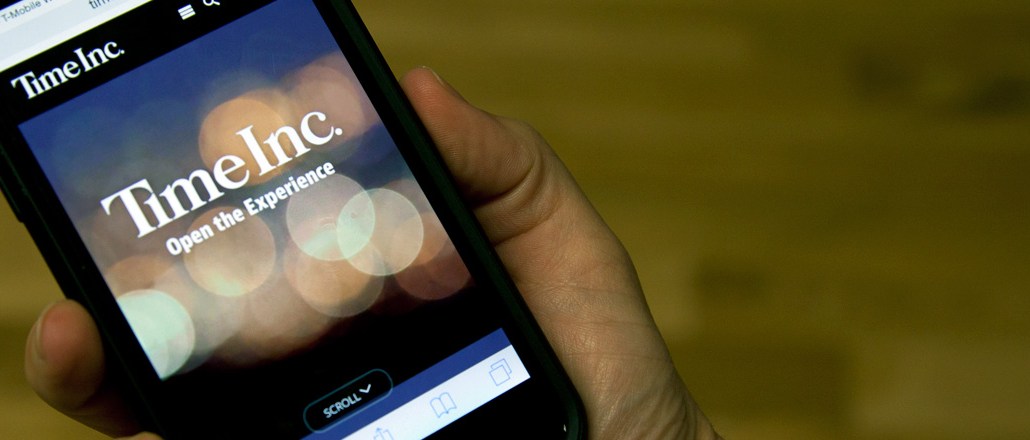Save 50% on a 3-month Digiday+ membership. Ends Dec 5.

When Time Inc. spun off from parent company Time Warner a year ago, the outlook was grim. The magazine company’s earnings had shrunk to $370 million down from $1 billion in 2006, and it was saddled with $1.3 billion in debt. Not exactly an auspicious start for the newly public company.
A year in, things are still dicey. The company’s revenue fell 8.7 percent last quarter to $680 million, due in large part to sinking print advertising revenue, which still represents upwards of 80 percent its ad revenue.
“While there are some marketers who remain devoted to physical print publications — especially large ones with substantial absolute scale — most are using digital media to satisfy marketing goals that in prior decades would have relied upon national magazines,” said Brian Wieser, senior analyst at Pivotal, painting a bleak picture for Time Inc. and other print-centric companies.
As the outlook for print continues to dim, Time Inc. has necessarily invested in digital. Here’s what it’s done in its first year as a public company.
Its digital footprint is growing.
Print circulation may be shrinking, but Time’s digital audience continues to climb. Time’s sites, which include People, Fortune and InStyle, got 104 million U.S. uniques in May, nearly double their traffic from a year before, according to comScore.
It’s gone deep on video.
If print is Time Inc.’s past, the Web and digital video are its future. Time said at its Newfronts presentation this year that it plans to produce 10,000 videos in 2015 alone. That output has included new franchises, such as its upcoming series about astronaut Scott Kelly, as well as video extensions of its existing properties. The company also is increasing its distribution partners and announced new ways of buying video by topic and audience segments and new video ad formats.
It has relentlessly cut costs.
Being profitable also means cutting costs — and jobs. In January alone, Time Inc. laid off the editor and publisher at All You and a roughly 12 staffers at Sports Illustrated and InStyle. Staffers fear the layoffs aren’t over.
Ad position: web_incontent_pos1
It has launched new digital-only properties.
Time Inc., a legacy brand, needs to win over the hearts and minds of today’s young people. To turn that around, in January, it launched The Snug, a DIY and home-decorating site that pulls content from other Time properties. It followed that up in March with beauty site Mimi and, last week, with The Drive, a vertical for car lovers.
“Moves to redefine themselves as a multiplatform, content-driven media company in sports, fashion, news, etc., are tangible signs of this progress,” said Kreisky Media Consultancy founder Peter Kreisky.
It has pushed paywalls.
An over-reliance on the whims of advertisers hasn’t served Time Inc. particularly well — so Time Inc. is trying to get more cash from readers themselves. In May, it rolled out a metered paywall for Entertainment Weekly, which asks readers to cough up $1.99 a month for digital access after they read 15 articles a month. The company plans to introduce paywalls to other properties this summer.
It has made acquisitions.
Time Inc’s mission to rebrand itself as a digitally integrated company has put it in buying mode. In June 2014, it acquired tech company Cozi, which creates tools to help families stay organized. In May, it spent roughly $12 million on sports site Fansided. More recently, it scooped up sports information companies SportsSignup and League Athletics; iScore, which operates scoring apps for youth sports leagues; and events company inVNT. The sports sites will be rolled up into new unit called Sports Illustrated Play.
It has invested in tech.
In this age of full-stack media companies, tech is destiny. Under CTO Colin Bodell, an eight-year Amazon vet, Time Inc. is centralizing its disparate technologies to better enable it to build new products for advertisers and readers. That means building a common CMS for all of its properties, accelerating its product development and even building a company-wide e-commerce platform.
More in Media

Digiday+ Research Subscription Index 2025: Subscription strategies from Bloomberg, The New York Times, Vox and others
Digiday’s third annual Subscription Index examines and measures publishers’ subscription strategies to identify common approaches and key tactics among Bloomberg, The New York Times, Vox and others.

From lawsuits to lobbying: How publishers are fighting AI
We may be closing out 2025, but publishers aren’t retreating from the battle of AI search — some are escalating it, and they expect the fight to stretch deep into 2026.

Media Briefing: Publishers turn to vertical video to compete with creators and grow ad revenue in 2026
Publishers add vertical video feeds to their sites to boost engagement, attract video ad spend and compete with news creators.
Ad position: web_bfu





